Our House In The City: New Urban Homes and Architecture is a worthwhile read for anyone renovating or building their own home from scratch. Author Sofia Borges, an architect and lecturer who has compiled several books on design and architecture for the publisher Gestalten, sifted through many nominations to make her selection.
These included a project by Dublin-based Odos Architects. While it didn’t make it into this book she is keen to hear from other Irish practices for consideration for future publications. The ideas in
Our House
will appeal to every taste, from the classically contemporary to the edgy modernist.
Our House In The City
, published by Gestalten, €39.90. Practices interested in submitting work to Gestalen should do so through the general email at gestalten.com
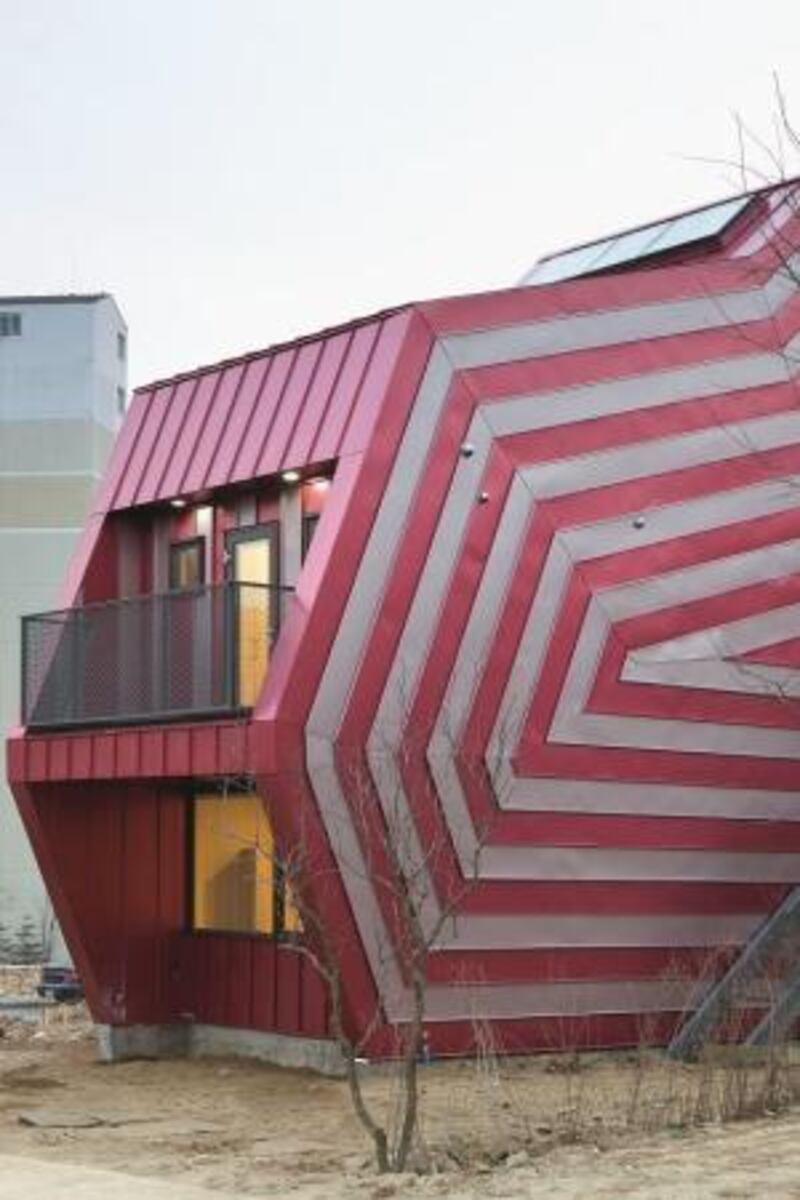
Candy brights: Lillipop house
The Lollipop House in Yongin, Seoul, designed by Republic of Korea-based architect firm Moonhoon is a property that has been given a Gangnam-style facelift with a colourful facade of pink and white candy stripe metal panelling.
This skin building design features a technique employed by Greystones-based Tom de Paor (01-2557022, depaor.com) on his striking copper-clad pumping station on Clontarf Road in Dublin.
While the Korean house may be more arresting it belongs to the same design family. Getting what de Paor describes as “a caravan without wheels” through planning in Dublin may present some challenges, he cautions.
Damien Conway, senior quantity surveyor with Andrew P Nugent and Associates, estimates that the cost of using a combination of a VM Zinc quartz grey and Pigmento Range rouge standing seam external facade (which would create a similar effect) would be about €110 to €120 per sq m supplied and fixed but exclusive of VAT. This price does not include plywood and timber frame build up or other structure below the facade finish shown.
moonhoon.com
Photograph: Nam Goong Sun
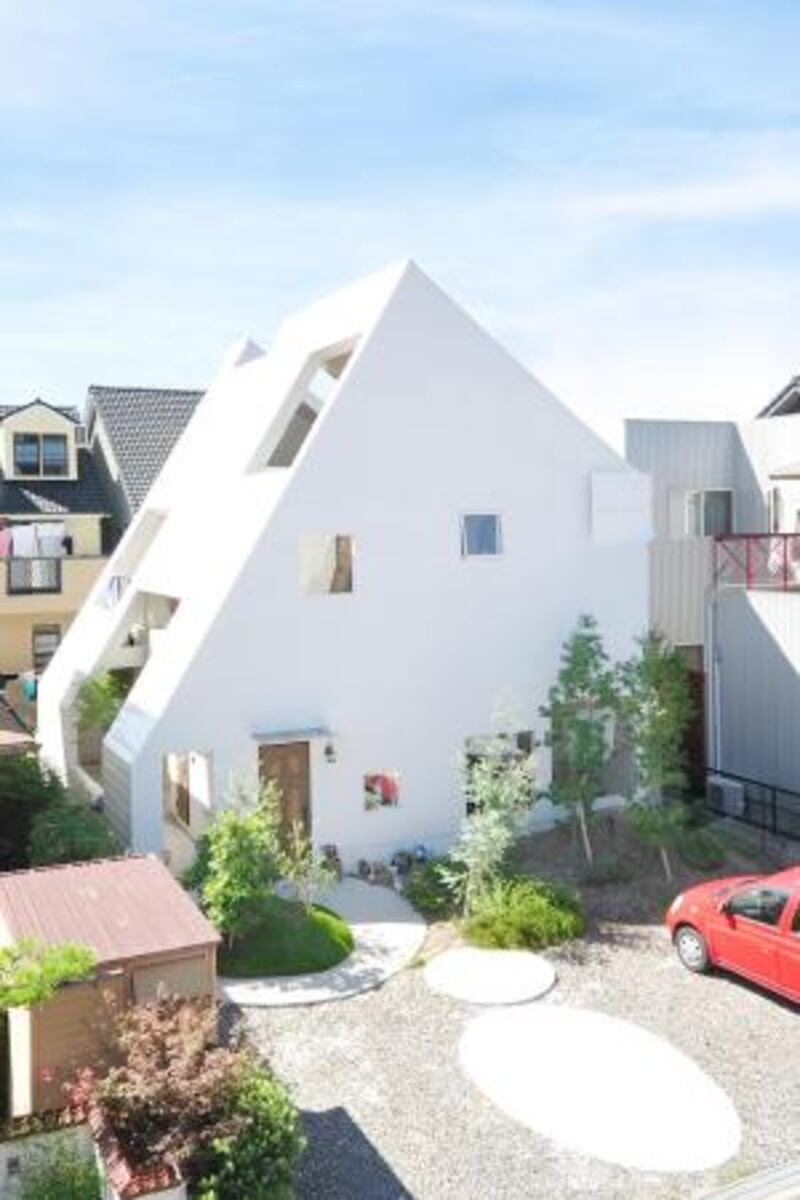
All white: The Montblanc House
The Montblanc House by Japan-based Studio Velocity is situated in a quiet neighbourhood in Okazaki, Japan, and boasts views of the mountains.
Named after the highest mountain in Western Europe “the home’s iconic and slanted quality inspires its symbolic name”, says author Sofia Borges, who lists it as one of her favourites.
The property and its terraces are housed underneath a roof that slopes to the ground creating in the gable of the house five so-called “window” openings that are in fact private outdoor spaces cleverly positioned so that they visually “block out” the neighbours.
A terrace at the top in what would traditionally be called the attic space gives a sense of a doll house.
To recreate this Toblerone -style home, the smooth finish of this timber-frame house could be achieved by cladding it in "extruded white fibreC panels or covering it in pigmented fibreglass or using white steel panels", says Dermot Boyd of Boyd Cody Architects (01-6330042, boydcodyarch.com). These materials are, however, "quite expensive in a domestic context";
studiovelocity.jp
Photograph: Kentaro Kurihara

Theatrical lighting: Mon Factory House
Mon Factory House by Kyoto-based Eastern Design Office in Japan has a concrete exterior and a raw concrete walled interior that is punctuated by porthole windows that theatrically illuminate – the drama especially evident on the stairs. The space throughout is super masculine, softened
only by light birch ply detailing – on the stairs this means a simple wooden rail.
For bespoke porthole windows, similar to those seen here, try Dublin-based Alucraft (01- 8470455, alucraft.ie).
easterndesignoffice.com
Photograph: Koichi Torimura
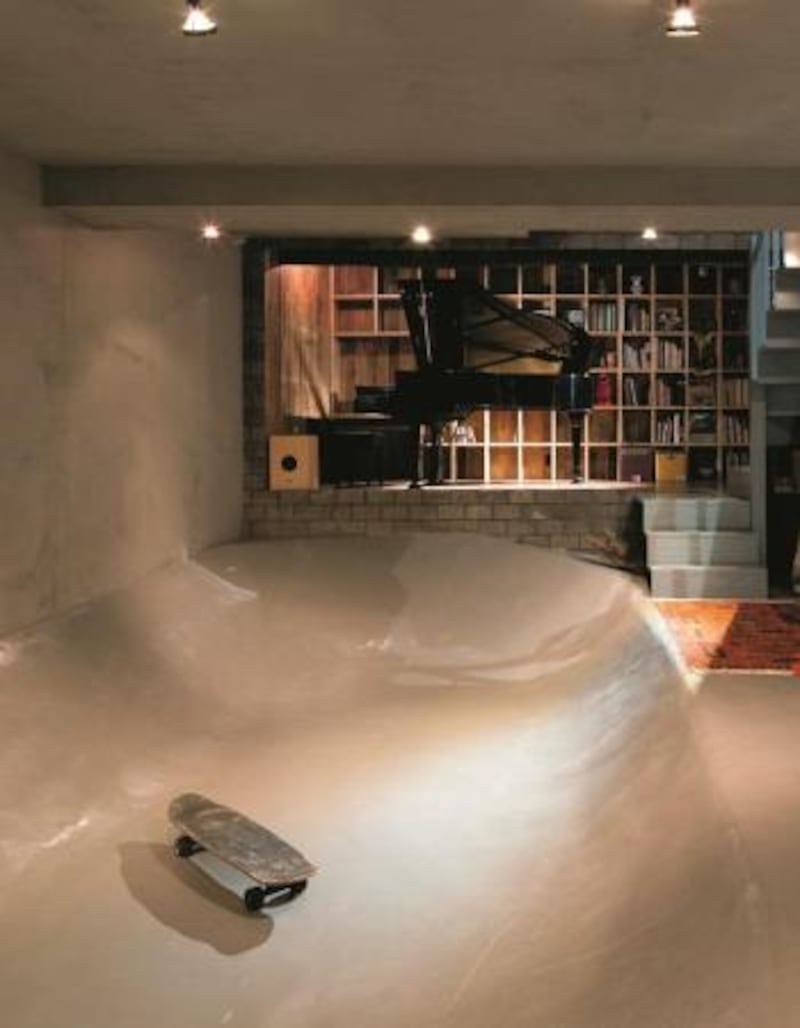
Style statement: Ultimate bachelor pad
This property in Kamakura city, Japan, by Level Architects has bachelor pad written all over its poured concrete out-there-ness. Instead of a tanker-sized sofa and equally large flat-screen TV they’ve installed a sleek supremely polished poured concrete mini skate ramp, a home accessory that is “not as unusual as you might think”, says Mike Keane of Skate Park of Dublin (087-724 7365, sofd.ie) in Santry. Keane is currently building a 483sq m (5,200sq ft) skate park in Limerick in birch wood, because the wood is easier to change and adapt in 18 months’ time when skaters get bored, he says. It’s also cheaper.
Replicating the design here in concrete will cost between €300 and €350 per sq m to design, fit and install. The same version in wood will cost from €100psm. The rink, pictured, which Keane estimates to measure 10m by 8m , will set you back a whopping €24,000. A version in wood will cost €8,000.
level-architects.com
Photograph: Junji Koijima
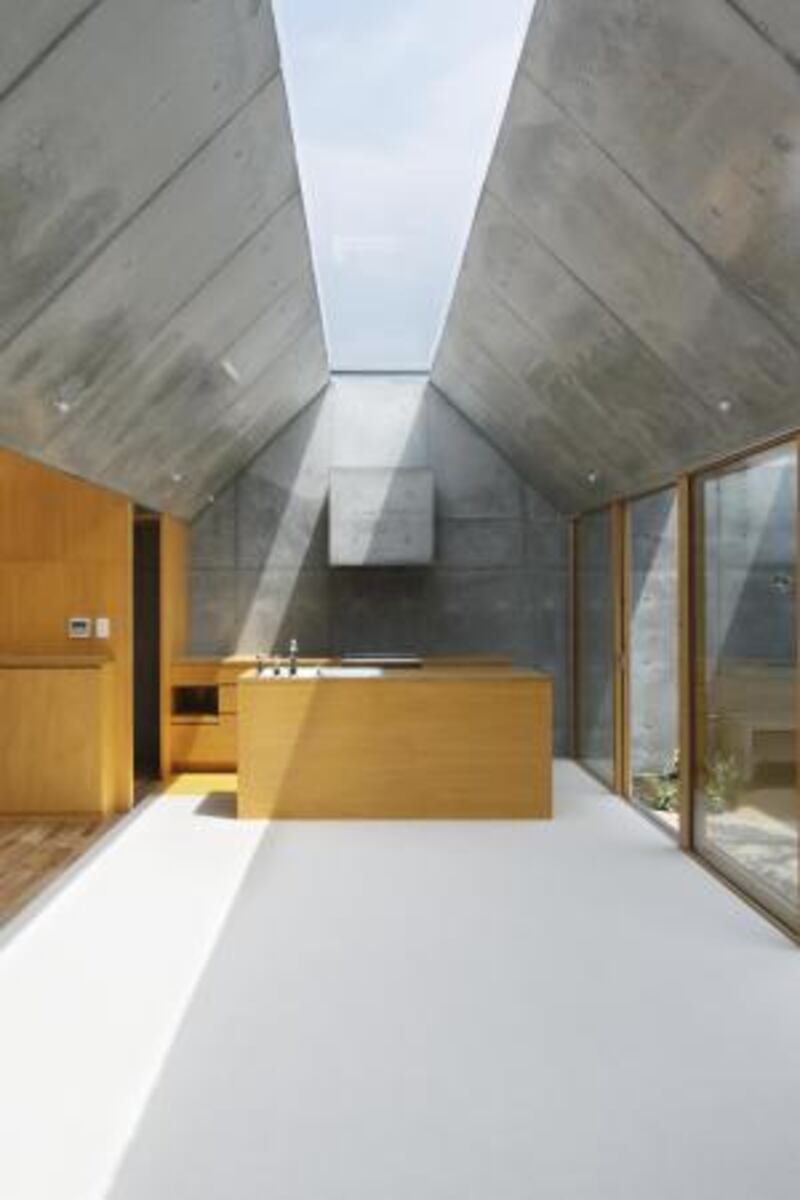
Light and dark: Outside-in house
The large open-plan living areas of this single storey house in Yamanashi, Japan, by architectural practice Takeshi Hosaka, are sandwiched between external areas that can also be closed off from the elements.
The inside and “outside” areas are all housed beneath a saw tooth or zigzag-shaped roof, with the peak of each serration flattened to accommodate a line of acrylic skylights that bring in the sky.
The warm beech wood frame windows and kitchen contrast with the cool grey concrete clad roof and gable wall.To the left of the shot there are bunk-bedded compartments as you might find on an old-fashioned sleeper train, divided as on the trains, by curtains.
FKL Architects (01-4736350, fklarchitects.com ) played with wood and concrete finishes in a project they completed in Rathmines. For a similar-looking kitchen with plenty of minimalistic polish try David Coyne of Oikos (01-4002404, oikos.ie) or interior designer Maria MacVeigh (086-1727042, mariamacveigh.com);
hosakatakeshi.com. Photograph: Koji Fujii/Nacasa and Partners
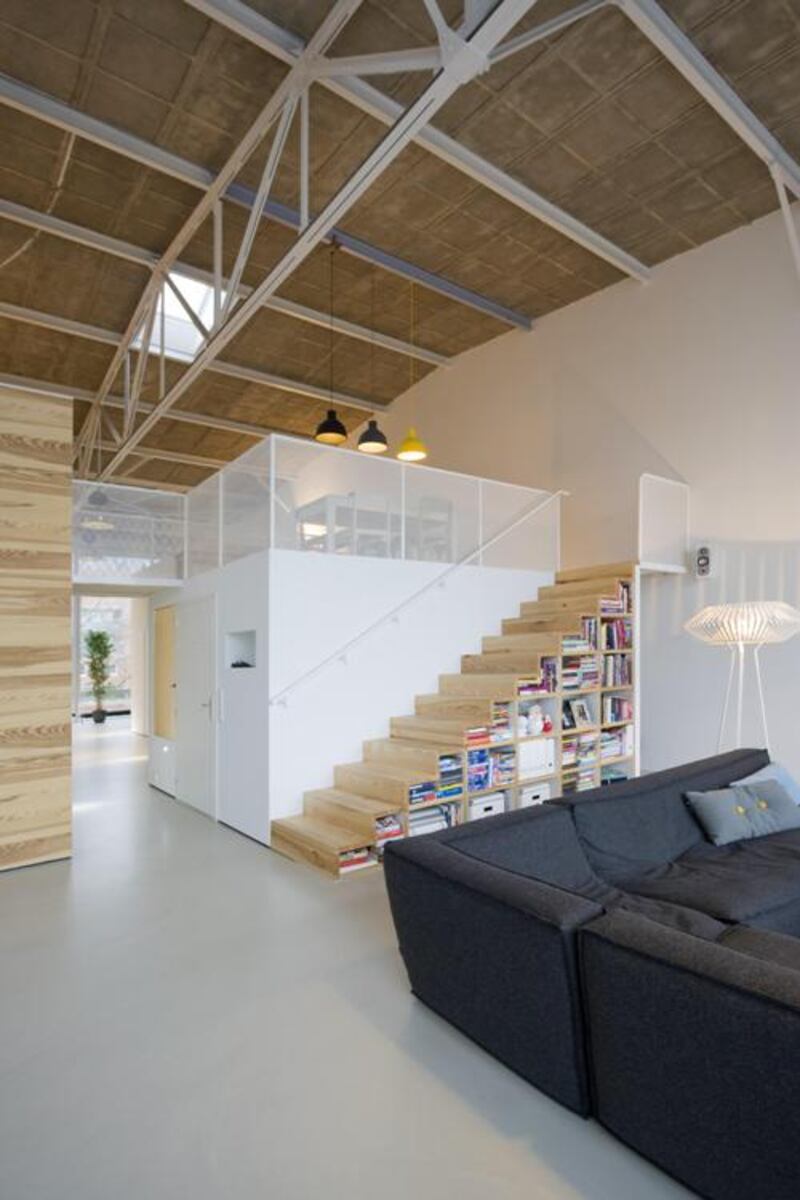
Saving space: Bookshelves
This house, designed by Dutch firm Marc Koehler Architects, is situated in an old canteen on KSMN Island, a man-made peninsula in the Eastern Docklands of Amsterdam. The loft space is one of six homes set on two distinct levels.
The concrete surfaces used in the interior are softened by the use of light wood cladding throughout and the open-plan space is punctuated by a staircase that doubles as a bookcase. It’s an easy idea to steal and adapt to a much smaller space.
Designer Patrick McKenna (01-4547011, wabi-sabi.ie) has created bespoke built-in furniture and kitchens for a plethora of people including musician Nick Seymour of Crowded House.
A staircase like the nonbalustraded one seen here will cost in the region of €5,500, McKenna says. marckoehler.nl. Photograph: Marcel Van der burg

Light touch: Daylight House
The Daylight House is built in an extremely dense neighbourhood of Yokohama, Japan, by Takeshi Hosaka Architects. The house is illuminated by the 25 flush with the rooflights installed on the flat top of the building. There are no windows. Factored into the design is an under-glass outdoor terraced area, a terrarium if you like, with planting. The design allows the family to enjoy both daylight and the night sky from the comfort of their own indoors.
Ruhm (01-458 9108, Ruhm.ie), in Rathcoole, a company founded by structural engineer Tom Donnellan and his business partner Bernie McHugh, can custom-build flat almost flush roof lights to any size.
Their triple-glazed designs have a U-value of 0.7 and are argon gas filled. A window measuring 1m by 2m costs €1,280, excluding fitting and VAT.
hosakatakeshi.com
Photograph: Koji Fujii/Nacasa and Partners
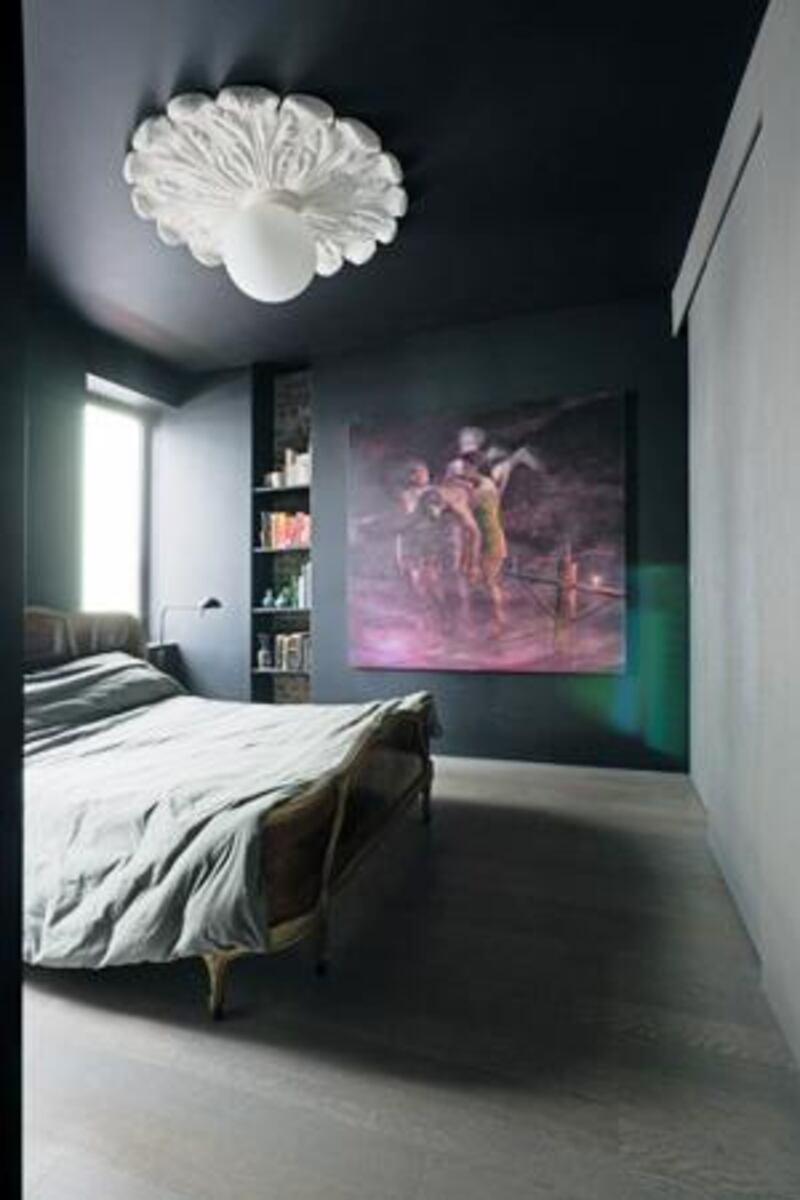
Dark and mysterious: Duplex
This Brooklyn duplex by Spacecutter, an architectural practice based in Long Island, New York is set atop a former tenement house in Williamsberg, a town so achingly fashionable that it has been christened hipsterville.
By adding a roof terrace to the top, the owners doubled the size of their apartment allowing them to make the living and kitchen areas open plan and add a roof terrace. In contrast, the master bedroom seen here is dark and intimate with the walls fading to black to encourage sleep. By retaining some of the original features like the ceiling rose they’ve knitted the new to the old but given it a modern twist by painting the plaster an eye-popping gallery white and adding a simple glass ball light fixture so that it contrasts with the dark mood of the paintscape. A bookshelf reveals the original brickwork behind it and storage is concealed behind the dark, masculine painted panels.
A clutter-free bedroom such as this has "a monastic feel that is a peaceful space to sleep in", says David Leyden of Leyden Hassett and Associates (0818- 222770, lha.ie) who favours a similar aesthetic. To get the same dark effect try Scree (227) or Lamp Black (228) from Little Greene's new grey collection; littlegreene.eu,
spacecutter.com
Photograph: Michael Vahrenwald













